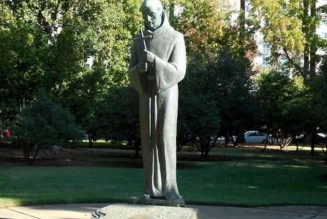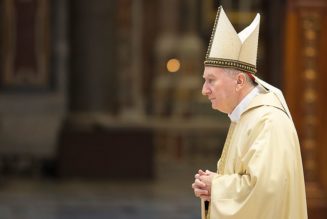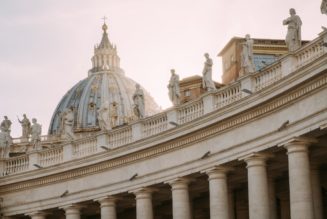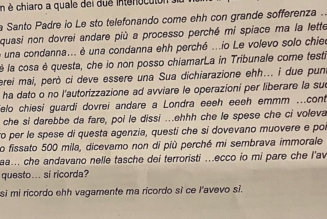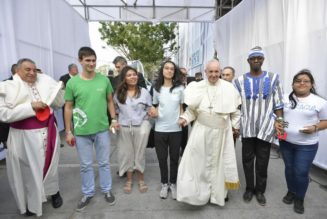“Maintaining its status as a separate body within the dicastery that enjoys direct access to the Holy Father and with its own leadership and staffing, the renewed and re-affirmed Pontifical Commission will play an increasingly incisive role in ensuring the Church is a safe place for children and vulnerable persons.”
O’Malley, the archbishop of Boston, is a member of the Council of Cardinal Advisers which advised the pope on the new constitution.
Emphasis on charity
The Office of Papal Charities, run by the papal almoner Cardinal Konrad Krajewski, becomes the new Dicastery for the Service of Charity.
According to Vatican News, the changes give the office “a more significant role in the Curia.”
Worship, liturgical books, and the extraordinary form
The constitution says that the newly named Dicastery for Divine Worship and the Discipline of the Sacraments is responsible for arranging “the drafting or revision and updating of the typical [original Latin] editions of liturgical books.”
“The dicastery confirms the translations of liturgical books into current languages and gives recognitio [formal recognition] to their appropriate adaptations to local cultures, legitimately approved by the bishops’ conferences,” it says.
It adds that “the dicastery deals with the regulation and discipline of the sacred liturgy as regards the extraordinary form of the Roman Rite.”
Pope Francis imposed tight restrictions on the celebration of extraordinary form Masses — also known as Traditional Latin Masses — in his July 2021 apostolic letter Traditionis custodes.
Other innovations
Regarding the body now known as the Dicastery for the Causes of Saints, the new constitution says: “It is for the dicastery to judge the granting of the title of Doctor of the Church to a saint, after having obtained the vote of the Dicastery for the Doctrine of the Faith concerning their eminent doctrine.”
The Pontifical Council for Culture and the Congregation for Catholic Education are united in the Dicastery for Culture and Education, which is divided into two sections.
Powers of the Secretariat of State
Early drafts of the constitution were said to have given wide powers to the Vatican Secretariat of State, which already occupied a central position within the Roman Curia. In the final version, the Secretariat of State is listed before the 16 dicasteries.
The published document says that the institution, overseen by Vatican Secretary of State Cardinal Pietro Parolin, “closely assists the Roman Pontiff in the exercise of his supreme mission.”
It describes the tasks of the Secretariat’s three sections: the Section for General Affairs; the Section for Relations with States and International Organizations; and the Section for Diplomatic Personnel of the Holy See.
The first section has broad responsibilities, including “attending to the handling of affairs concerning the daily service of the Roman Pontiff,” coordinating the work of dicasteries “without prejudice to their autonomy,” drafting papal documents such as apostolic letters, and giving “indications to the Dicastery for Communication regarding official communications concerning both the acts of the Roman Pontiff and the activity of the Holy See.”
Further novelities
Highlighting other novelties in the text, Vatican News noted that the Secretariat of State is defined as a “papal secretariat,” the Curia Personnel Office is transferred to the Secretariat for the Economy, and “the Administration of the Patrimony of the Apostolic See (APSA) must carry out its work through the instrumental activity of the Institute for the Works of Religion,” also known as the “Vatican bank.”
“The constitution also establishes that for clerics and religious serving in the Roman Curia, the mandate is for five years and may be renewed for a second five-year term, at the end of which they return to their dioceses and communities of origin,” the Vatican’s online news portal said.
Goals of the reform
The goals of the reform are set out in a section of the new constitution called “Principles and criteria for the service of the Roman Curia.”
It sets out 11 guiding principles: “Service to the Pope’s mission,” “ Co-responsibility in the communio,” “Service to the mission of the Bishops,” “Support for the particular Churches and their Episcopal Conferences and Eastern hierarchical structures,” “The vicarious nature of the Roman Curia,” “Spirituality,” “Personal integrity and professionalism,” “Collaboration between the Dicasteries,” “Interdicasterial and intradicasterial meetings,” “Expression of catholicity,” and “Reduction of Dicasteries.”
As well as defining the competencies of the 16 dicasteries, the 54-page constitution outlines the role of other Vatican institutions, including judicial bodies such as the Apostolic Penitentiary, economic organizations such as the Office of the Auditor General, and other offices such as the Prefecture of the Papal Household.
It lists the duties of the Camerlengo of the Holy Roman Church, currently Cardinal Kevin Farrell, who oversees the functioning of the Vatican during a papal interregnum.
It also defines the qualities expected of lawyers working for the Holy See, who are required “to lead an integral and exemplary Christian life and to carry out the duties entrusted to them with the utmost conscience and for the good of the Church.”
A 9-year journey to publication
On his election in 2013, Pope Francis was widely seen as having a mandate to reform the Roman Curia. Over the first nine years of his pontificate, he issued decrees changing Vatican law and structures, which are reflected in the text of the new constitution.
The Council of Cardinals finished the first draft of the new constitution in 2018. The text was then circulated among the presidents of national bishops’ conferences, dicasteries of the Roman Curia, synods of the Eastern Churches, conferences of major superiors, and select pontifical universities for feedback in 2019.
The cardinals met in February 2020 for “an in-depth re-reading and revision” of the document.
Amid the coronavirus pandemic, they continued to review the text at virtual meetings with Pope Francis.
Seven cardinals currently serve on the Council of Cardinals, helped by secretary Bishop Marco Mellino: Honduran Cardinal Óscar Andrés Rodríguez Maradiaga, who acts as coordinator; Vatican Secretary of State Cardinal Pietro Parolin; Cardinal Giuseppe Bertello, president of the Pontifical Commission for the Vatican City State; Indian Cardinal Oswald Gracias of Bombay; German Cardinal Reinhard Marx of Munich and Freising; the U.S. Cardinal O’Malley; and Congolese Cardinal Fridolin Ambongo Besungu of Kinshasa.
In January 2021, Parolin said that “considerable progress” had already been made in the pope’s reform of the Roman Curia, particularly with regard to Vatican finances, pointing to the creation of the Council for the Economy, the Secretariat for the Economy, and the Office of the Revisor General.
He added that further reforms could include the merger of the Congregation for the Evangelization of Peoples with the Pontifical Council for the New Evangelization and the combination of the Congregation for Catholic Education with the Pontifical Council for Culture.
“But these are minor actions compared to what has already been done,” he said. “Now it is a question of giving homogeneity to all the reforms which have been made, by means of the new apostolic constitution.”
Formal unveiling
The Vatican will formally present the new constitution at a press conference on Monday, March 21.
Speakers will include Cardinal Marcello Semeraro, prefect of the Congregation for the Causes of Saints, Bishop Mellino, and canon law expert Father Gianfranco Ghirlanda, S.J.
The new constitution refers to previous reforms of the Roman Curia in past centuries. It highlights reforms instituted in the 20th century by Pope Paul VI and Pope John Paul II.
It says: “In continuity with these two recent reforms and with gratitude for the generous and competent service that over time so many members of the Curia have offered to the Roman Pontiff and to the universal Church, this new apostolic constitution proposes to better harmonize the current exercise of the Curia’s service with the path of evangelization that the Church, especially in this season, is living.”
Join Our Telegram Group : Salvation & Prosperity

